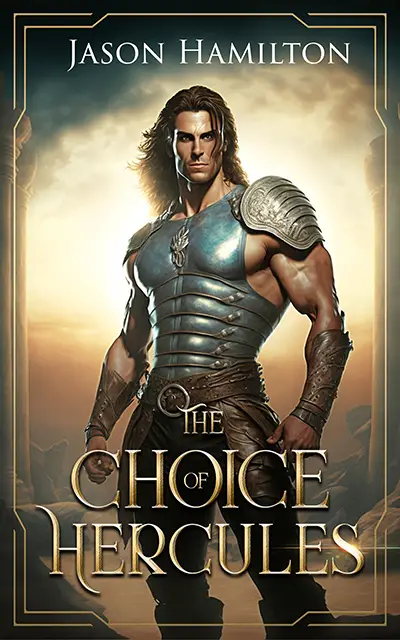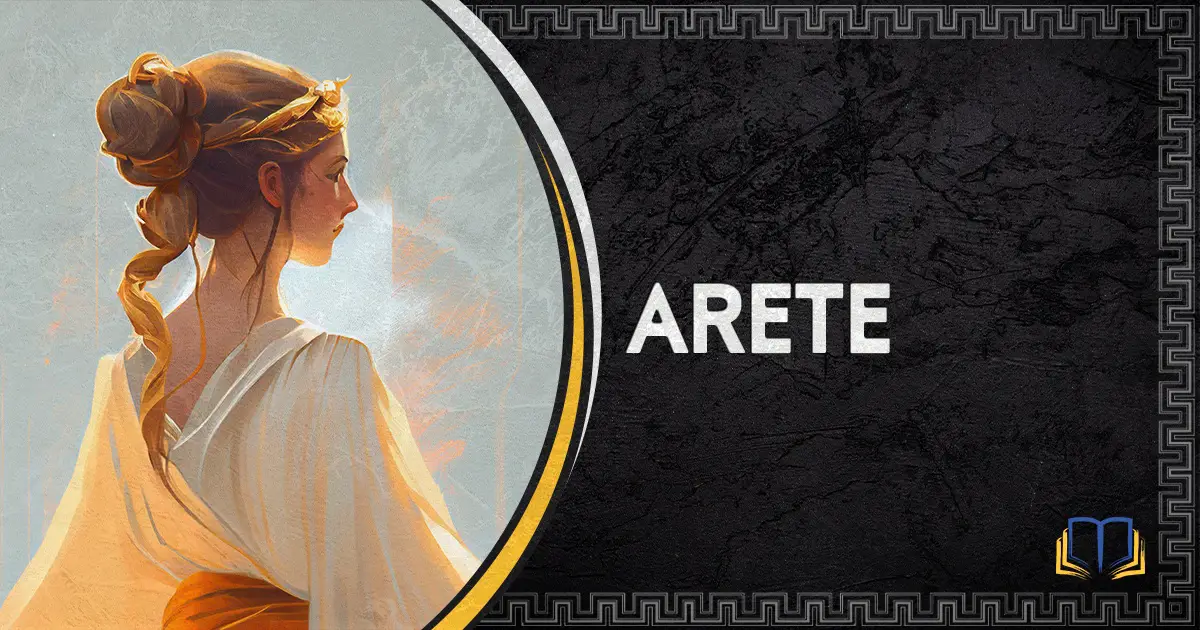Arete, the ancient Greek goddess of virtue and excellence, has long been revered as a symbol of the highest human potential.
But beyond her mythical origins, Arete represents much more than just a deity of ancient times. To the ancient Greeks, Arete was a guiding force, inspiring them to strive for excellence in all aspects of their lives. It was believed that through hard work and dedication, one could attain the pinnacle of Arete, fully realizing their inherent potential.
In this article, we will explore the enduring legacy of Arete, both as a goddess and a concept. We will delve into the stories and teachings surrounding this revered figure and consider how her principles can be applied to our own lives.
Also don’t forget to check out our Greek Mythology hub for all things related to Greek Mythology.
Who Was Arete?
Arete is an ancient Greek concept that refers to excellence or virtue. It is connected to the idea of fulfilling one’s potential or inherent function, and may also be used to describe moral virtue.
In Greek mythology, Arete was a minor goddess who, along with her sister Homonoia, formed the Praxidikai.
In Homeric literature, arete is often associated with bravery and effectiveness. It is tied to human knowledge, with the phrases “virtue is knowledge” and “arete is knowledge” used interchangeably. According to this belief, the highest human potential is considered to be knowledge, with other abilities stemming from this central ability.
Contemplation, or the study of human knowledge, is considered to be the highest human ability and source of happiness, according to Aristotle. Therefore, the pursuit of arete, or excellence and virtue, is closely tied to the pursuit of knowledge and the development of one’s intellectual abilities.
Family of Arete
Arete does not have a large family, but we do know who her parents were:
- Soter: a daimon representing safety and preservation who was associated with Zeus and his family in the Orphic Hymns and had cult titles in his honor.
- Praxidike: a goddess of judicial punishment and exactor of vengeance, two closely related ideas in ancient Greek culture.
She also had a sister named Homonoia, who was a minor goddess of concord, unity, and shared understanding, and her opposite was Eris (Strife).
Together, they made up the Praxidicae.
Arete as a Concept
In ancient Greek, the word “arete” meant virtue or excellence. The ancient Greeks used this term to describe excellence in anything, whether it be a person, animal, or object. However, it’s important to note that the “arete” of a person is different from the “arete” of an animal or object.
“Arete” could describe any type of valor or virtue, such as bravery or loyalty. The word is related to the word “aristos,” which means superior ability or superiority.
By the 5th and 4th centuries BC, “arete” for men included virtues such as justice and self-restraint.
Arete in Philosophy
Aristotle’s Doctrine of the Mean is an example of his thinking on “arete.” In this philosophy, Aristotle discusses the idea of education towards “arete,” or things that are useful in life.
Homer also used the word to describe great heroes and applied it to Penelope, the loyal wife of Odysseus.
Over time, the concept of “arete” was incorporated into philosophy to describe the sum of all virtues. To be described as having “arete,” a person had to fully achieve their potential or purpose.
However, philosophers admitted that there was no consensus on the exact meaning or how to achieve “arete.” Most believed it could be achieved through a lifetime of diligence and study.
The Personified Arete: A Minor Goddess
Arete was personified as a goddess, the sister of Homonoia and daughter of Soter and Praxidike.
Side note: It’s important to note that Arete is not to be confused with the mythological Queen Arete mentioned in the Argonautica and the Odyssey.
Arete and Homonoia were known as the Praxidikai, or “Exacts of Justice.” Arete is often used as a personification of virtue, with little mythical background.
As such, it can be difficult to determine if a writer is referring to the idea of arete or the goddess Arete in certain contexts.
Mentions of Arete
The only known story involving Arete is “Hercules at the Crossroads,” in which Arete offers glory and a life of struggle against evil to Heracles, while Kakia offers wealth and pleasure.
In other works, Aristotle also wrote about the meaning of Arete to the Greeks.
Simonides claimed that Arete lived on unclimbable rocks and only visited those who had reached “the peak of manliness.” This suggests that the goddess Arete was seen as a symbol of excellence and virtue that was only attainable through hard work and dedication.
Arete and Hercules
One of the only instances we have of the personified Arete interacting in Greek Mythology is the story of the Choice of Hercules, where Hercules is at a crossroads and meets two women.
The first was Arete, the embodiment of Happiness and Virtue, and the second was Kakia, the embodiment of Pleasure and Vice.
Arete offered Hercules a life of happiness through hard work and the pursuit of noble goals, but warned that this path would involve effort and sacrifice. Kakia offered a life of ease and immediate pleasure, but warned that these pleasures were fleeting and unfulfilling.
In the end, Hercules chose to follow Arete and pursue a virtuous and fulfilling life, understanding that the path to true happiness was worth the effort.
Read more in my other article on this exact topic.
Similar Gods and Goddesses
There are a number of gods and goddesses that represented certain ideals or abstract concepts. Often, you wouldn’t even be able to tell the difference between them, since they were all so minor, and their virtues so tightly linked, that their names were often used interchangeably.
Arete was one of these goddesses, and so she is often associated with various similar ideals and the gods/goddesses that represent them. These include:
- Calocagathia, or nobility, was seen as a combination of noble attributes that could lead to arete, or excellence.
- Praxidike, the goddess of the execution of justice, was the mother of Arete and responsible for both legal justice and personal vengeance.
- Soter, the savior and sometimes referred to as the father of Arete, was the god of deliverance from harm and the assurance of safety.
- Homonoia, or concord, brought people to a similar mindset and ended enmity.
- Eucleia, or good reputation, was seen as necessary for virtue, as reputation within the community was of great importance.
- Eunomia, or good order, ensured lawful conduct and stability.
- Aidos, or shame, could drive a person toward arete by pushing them to improve.
- Eusebia, or faith, represented the belief in and devotion to the gods that enabled someone to reach the state of arete.
Common Questions
What was Arete the goddess of?
Arete was a minor Greek goddess who personified virtue and excellence. Arete represented the highest human potential and inspired people to strive for greatness in all aspects of their lives. In ancient Greek culture, Arete was associated with courage, strength, and the ability to overcome adversity.
What is arete in the Odyssey?
In ancient Greek culture, arete referred to excellence and the pursuit of one’s full potential. It meant being the best person one could be, which could vary depending on the individual. In the Odyssey, characters such as Penelope, Odysseus, and Achilles are described as having arete due to their exceptional qualities as a wife, a strategist, and a warrior, respectively. Arete is generally associated with positive, admirable qualities and actions.
How did Odysseus show arete?
Odysseus, the protagonist of Homer’s epic the Odyssey, demonstrates arete, or excellence, in a number of ways. After landing on the island of Phaeacia, where he was rescued, Odysseus participated in sports at the Phaeacians’ court and bested many of their athletes, demonstrating his exceptional physical ability. In addition to his physical prowess, Odysseus is also depicted as highly intelligent and resourceful, as demonstrated by his ability to think up effective plots and strategies.
How did Plato define Arete?
According to Plato, arete was mainly associated with moral excellence. He saw arete as something that was superordinate to specific moral virtues such as courage, temperance, and justice, and as a special, unnamed quality that they all shared. In other words, Plato saw arete as the essence of these virtues, the underlying quality that made them what they were.
Why is Arete important to Greek culture?
Arete, as a concept, was extremely important within Greek culture for a number of reasons. First and foremost, arete was seen as a measure of excellence, goodness, fulfillment, or virtue. This meant that striving for arete was seen as a crucial aspect of living up to one’s full potential and leading a fulfilling life. In early Greek philosophy, the purpose or function of humanity was a topic of much debate, with many philosophers striving to understand what it meant to be human so that they could better understand how to pursue arete.
Final Thoughts
As we consider the enduring legacy of Arete, it is clear that this concept continues to hold great value and significance in our modern world.
Whether we are seeking to achieve personal or professional goals, the principles of Arete can guide us on the path towards excellence and fulfillment.
So let us embrace the wisdom of Arete and strive to reach our full potential, both as individuals and as a society.
If you’d like to learn more, I have a short story that I wrote all about the Choice of Hercules tale, which heavily involves Arete. Check it out!

This is a short story that takes place in Greek Mythology (and is part of my shared universe of mythic stories).
It’s a faithful adaptation of a little-known myth that is perhaps my favorite about Hercules. Check it out!


